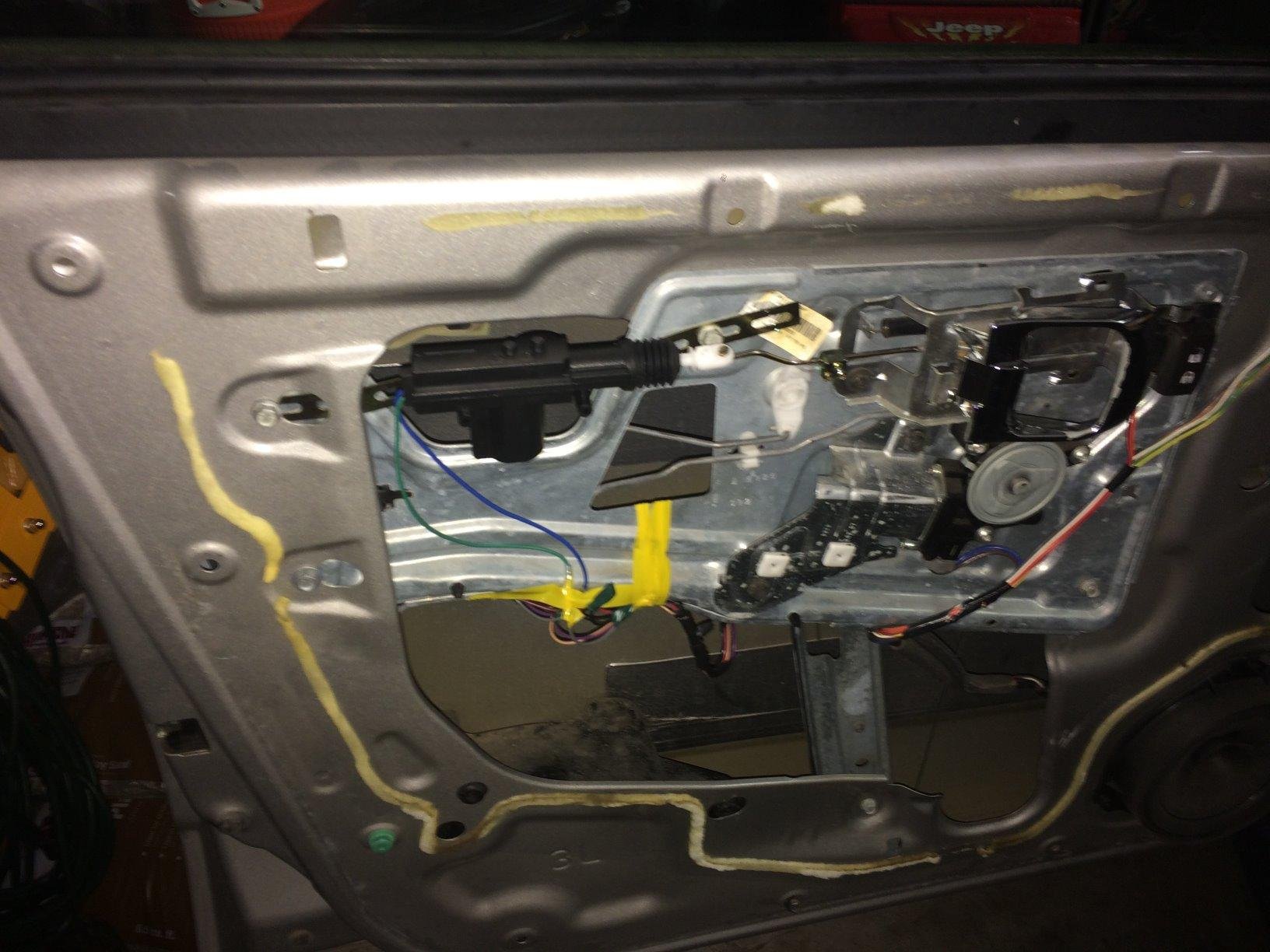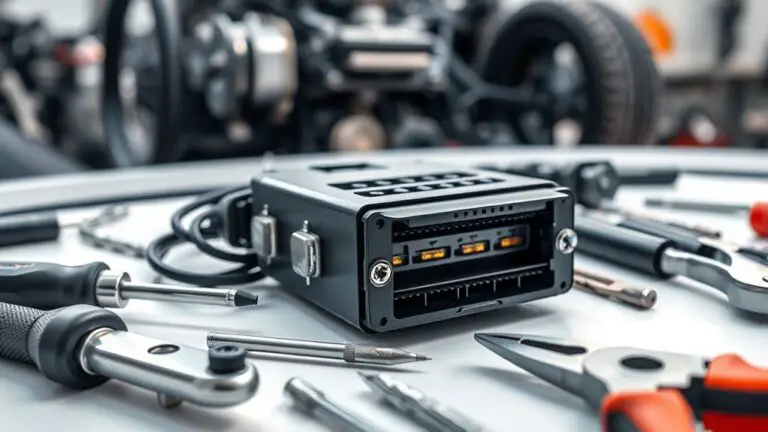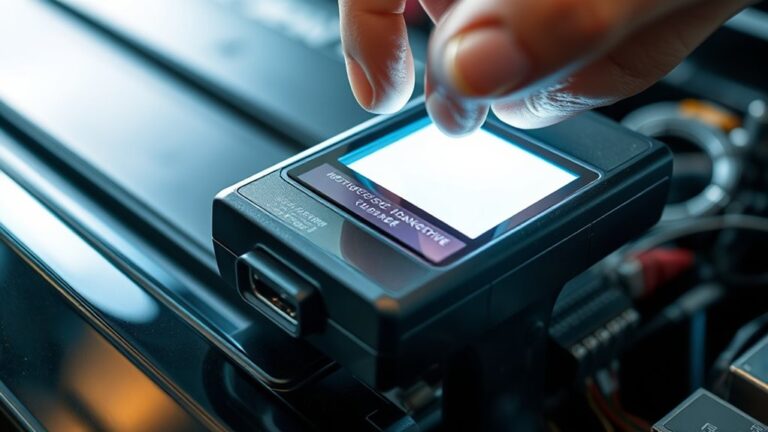Power Door Lock Not Working Drivers Side
Having a power door lock not working on the driver’s side can be frustrating and inconvenient. In this blog post, we will discuss some common issues with power door locks and the importance of having them function properly.
Common issues with power door locks
There are several reasons why the power door lock on the driver’s side might not be working. One common issue is a faulty door lock actuator. This component is responsible for physically locking and unlocking the door. Over time, the actuator can wear out or become damaged, resulting in a malfunctioning power door lock.
Another possible cause is an issue with the wiring or electrical connections. If there is a loose or disconnected wire, the power door lock may not receive the necessary electrical signal to operate. It is also possible for a blown fuse or a faulty switch to cause the power door lock to stop working.
Importance of functioning power door locks
Having functioning power door locks is essential for both convenience and safety. With a working door lock, you can easily secure your vehicle and protect it from theft. It also provides peace of mind knowing that your car is properly locked when parked in public areas.
Furthermore, functioning power door locks allow for smooth entry and exit of the vehicle. If the driver’s side power door lock is not working, it can be inconvenient and even hazardous, especially in emergency situations. Quick and easy access to the vehicle is crucial for the safety and well-being of the driver and passengers.
So, dealing with a power door lock not working on the driver’s side can be a hassle. Understanding the common issues and the importance of functioning power door locks can help you diagnose and address the problem more effectively. If you are experiencing this issue, it may be worth consulting a professional to properly diagnose and repair the problem.

Troubleshooting Steps
If you are facing the issue of a power door lock not working on the driver’s side, there are a few troubleshooting steps you can take to identify and potentially fix the problem. Here are two important steps to follow:
Checking the fuse
One common reason for a power door lock malfunction is a blown fuse. To check if this is the case, you will need to locate the fuse box in your vehicle. The location of the fuse box may vary depending on the make and model of your car, so refer to the owner’s manual if you are unsure. Once you find the fuse box, look for the fuse labeled “door lock” or “power lock”. Carefully remove the fuse and inspect it for any signs of damage or a blown wire. If the fuse appears to be faulty, replace it with a new one of the same amperage rating. Test the power door lock to see if it is now working.
Testing the door switch
Another possible cause of a non-functioning power door lock is a faulty door switch. The door switch is the button or lever inside the car that you use to lock and unlock the doors. Start by checking if the door switch is securely attached and not loose or damaged. If it looks fine, you can test the switch using a multimeter. Set the multimeter to measure continuity and touch the probes to the switch terminals while pressing the switch button. If there is no continuity, the switch may be faulty and will need to be replaced.
Remember, these troubleshooting steps are a general guide, and it is always recommended to consult a professional if you are unsure or if the problem persists. They will have the expertise and equipment to diagnose and repair the issue accurately.

Potential Causes
If you find that the power door lock on the driver’s side of your car is not working, there could be a few potential causes for this issue. Understanding what these causes are can help you troubleshoot and potentially fix the problem. Here are two common causes to consider:
Wiring and electrical issues
One possible cause of a malfunctioning power door lock is a problem with the wiring or electrical connections. Over time, the wires can become worn or damaged, leading to a loss of power and causing the lock to stop working. It could also be an issue with a faulty electrical connection, such as a loose or corroded wire. To identify if this is the cause, you may need to inspect the wiring harness and connections associated with the power door lock system. Look for any visible signs of damage or loose connections. If you notice any issues, it may be necessary to repair or replace the affected wiring or connections.
Faulty actuator
Another potential cause of a non-working power door lock on the driver’s side is a faulty actuator. The actuator is the component responsible for physically moving the locking mechanism. If the actuator is faulty or damaged, it can prevent the door lock from functioning properly. To determine if this is the problem, you may need to remove the door panel to access the actuator. Check for any signs of damage or wear on the actuator, such as broken parts or corrosion. If the actuator is indeed faulty, it will need to be replaced with a new one.
Remember, these are just a couple of potential causes for a power door lock not working on the driver’s side. It is always recommended to consult a professional if you are unfamiliar with automotive electrical systems or if the problem persists after attempting troubleshooting steps. They will have the expertise and knowledge to properly diagnose and resolve the issue.

Repairing the Door Lock Actuator
If you are experiencing a problem with the power door lock on the driver’s side of your car, there are a few potential causes to consider. In the previous blog section, we discussed wiring and electrical issues as well as a faulty actuator as possible culprits. Now, let’s dive deeper into how you can go about repairing the door lock actuator.
Removing the Door Panel
To access the actuator, you will first need to remove the door panel. Start by locating and removing any screws or fasteners holding the panel in place. These are usually found on the edges or near the door handle. Once all the screws are removed, gently pry the panel away from the door, releasing any clips or hooks that may be securing it. Be careful not to force or damage the panel during this process. Once the panel is free, set it aside in a safe place.
Replacing the Actuator
With the door panel removed, you should now have clear access to the actuator. Carefully disconnect any electrical connectors or wiring harnesses connected to the actuator. Take note of how these are attached to ensure proper reinstallation later. Next, remove any mounting bolts or screws holding the actuator in place. Once these are removed, you can take out the old actuator.
At this point, it is a good idea to compare the old actuator with the new one to ensure they are the correct replacement parts. If they match, proceed with installing the new actuator. Position the new actuator in place and secure it with the mounting bolts or screws. Then, reconnect the electrical connectors and wiring harnesses according to the notes you made earlier.
Once the new actuator is securely in place and all connections are reestablished, you can reattach the door panel. Align the panel with the door frame and gently press it back into position. Make sure all clips or hooks are properly engaged. Finally, reinstall any screws or fasteners to secure the panel.
Remember, if you are unsure about any step of this process or if the problem persists after replacing the actuator, it is always recommended to consult a professional. They have the expertise and knowledge to properly diagnose and resolve issues with power door lock systems.

Testing the Door Lock Mechanism
If you’ve recently repaired the door lock actuator on the driver’s side of your car and are unsure whether it’s functioning correctly, there are a few key tests you can perform to verify its proper installation and ensure the power door lock system is working as intended.
Verifying proper installation
Before testing the door lock mechanism, it’s essential to ensure that the actuator has been installed correctly. Double-check that all electrical connectors and wiring harnesses are securely connected to the actuator. Make sure no wires are pinched or damaged during the installation process. It’s also advisable to examine the mounting bolts or screws to ensure they are tightened sufficiently.
Activating the power door lock system
To test the door lock mechanism, you’ll need to activate the power door lock system. This can typically be done using either the key fob or the door lock switch located on the driver’s side door panel. Stand within a reasonable distance from the car, press the lock button, and observe if the driver’s side door lock engages. Repeat the process with the unlock button and notice if the door unlocks smoothly.
While testing, listen for any unusual sounds that could indicate a problem with the actuator or the power door lock system. Pay attention to any delayed or sluggish response when locking or unlocking the door.
If the door lock mechanism doesn’t function properly or exhibits any issues during testing, it may be necessary to re-examine the actuator installation or consider seeking professional assistance. A certified technician can diagnose and resolve any lingering problems with the power door lock system to ensure optimal functionality and peace of mind.
Remember, it’s crucial to test the door lock mechanism thoroughly after any repairs or replacements to prevent future issues and ensure the safety and security of your vehicle.

Common DIY Solutions
If you’re experiencing issues with the power door lock on the driver’s side of your car, there are a few common DIY solutions you can try before seeking professional help. Here, we will discuss two common solutions: cleaning and lubricating the lock mechanism and resetting the central locking system.
Cleaning and Lubricating the Lock Mechanism
One possible reason for the power door lock not working on the driver’s side could be dirt or debris interfering with the lock mechanism. To address this, start by cleaning the lock mechanism with a soft cloth and a mild cleaning solution. Be sure to remove any accumulated dirt or grime around the lock.
After cleaning, apply a lubricant specifically designed for door locks. Use a fine nozzle to reach the internal parts of the lock mechanism. Work the lubricant into the lock by manually operating it a few times. This can help free up any stuck components and improve the overall functionality of the lock mechanism.
Resetting the Central Locking System
Sometimes, the power door lock issue can be resolved by simply resetting the central locking system. Begin by disconnecting the car battery’s negative terminal for about 30 minutes. This will ensure that any residual power in the system dissipates. After reconnecting the battery, try using the power door lock again to see if the issue has been resolved.
If these DIY solutions do not resolve the problem and the power door lock on the driver’s side is still not working, it may be necessary to seek professional assistance. A certified technician will have the expertise and tools to diagnose and repair any underlying issues with the lock mechanism or the power door lock system.
Remember, it’s important to address power door lock issues promptly to ensure the safety and security of your vehicle. By trying these common DIY solutions, you may be able to save time and money by resolving the problem yourself.

Seeking Professional Help
When to Consult a Mechanic or Locksmith
If the DIY solutions mentioned earlier did not resolve the issue with the power door lock on the driver’s side of your car, it may be time to seek professional assistance. Here are a few signs that indicate it’s time to consult a mechanic or locksmith:
- No Response: If the power door lock does not respond at all, even after trying the cleaning and lubricating methods and resetting the central locking system, it could be a more complex issue that requires professional attention.
- Unusual Noises or Movement: If you hear strange noises when attempting to use the power door lock, or if it moves partially but does not fully lock or unlock, there may be internal mechanical issues that need the expertise of a professional.
- Repeated Failures: If the power door lock intermittently works and then stops working again, it could be a sign of an underlying electrical problem that requires diagnosis and repair by a mechanic or locksmith.
- Malfunctioning Other Locks: If the power door locks on the other doors of your vehicle are also experiencing issues, it could indicate a larger problem with the central locking system, which would require professional investigation.
Estimated Repair Costs
The cost of repairing a power door lock on the driver’s side can vary depending on the make and model of the vehicle, the extent of the damage, and the labor rates in your area.
On average, the cost to repair a power door lock can range from $100 to $400. This includes the cost of labor, replacement parts if needed, and any diagnostic fees.
It’s important to keep in mind that these are rough estimates and could vary significantly based on the factors mentioned earlier. It is advisable to consult with a trusted mechanic or locksmith who can provide a more accurate assessment and estimate for your specific situation.
Remember, seeking professional help ensures that the problem with your power door lock is properly diagnosed and repaired, maximizing the safety and security of your vehicle.
Preventive Maintenance Tips
Tips to Avoid Power Door Lock Issues
To ensure that your power door lock on the driver’s side continues to function smoothly, there are a few preventive maintenance tips you can follow:
- Regular Cleaning and Lubrication: Take the time to clean and lubricate the power door lock mechanism on a regular basis. Use a mild solvent to remove any dirt or debris that may have accumulated, and then apply a lubricant specifically designed for door locks. This will help prevent the lock from becoming stiff or jammed.
- Use the Key Properly: When using the key to lock or unlock your car, always do it gently and without applying excessive force. Avoid twisting or turning the key forcefully as this can damage the lock mechanism over time.
- Avoid Slamming the Door: Slamming the door forcefully can put stress on the power door lock mechanism, leading to potential issues. Teach yourself and others to close the door gently to prevent any unnecessary strain on the lock.
- Protect from Extreme Temperatures: Exposure to extreme temperatures, whether hot or cold, can have a negative impact on the power door lock. Park your vehicle in shaded areas or use a car sunshade to protect the interior from excessive heat. In colder weather, consider using a de-icer spray on the lock to prevent freezing.
Regular Inspection and Maintenance
In addition to preventive measures, it is important to regularly inspect and maintain the power door lock system. Here are some steps you can take:
- Check for Loose Wiring: Inspect the wiring that connects to the power door lock mechanism. Look for any loose connections or frayed wires that may be affecting the functionality of the lock. If you notice any issues, have a professional mechanic or locksmith address them promptly.
- Test the Lock: Periodically test the power door lock by using both the key and the interior lock buttons. Ensure that the lock engages and disengages smoothly without any resistance or strange noises. If you notice any signs of difficulty or malfunction, it may be time to seek professional assistance.
By following these preventive maintenance tips and conducting regular inspections, you can help prevent power door lock issues on the driver’s side of your car. Taking proactive measures will not only save you from the frustration of a malfunctioning lock but also potentially save you from costly repairs in the future.
Conclusion
Properly maintaining your power door lock on the driver’s side is essential to avoid potential issues and ensure smooth operation. By following preventive maintenance tips such as regular cleaning and lubrication, gentle use of the key, avoiding slamming the door, and protecting from extreme temperatures, you can prolong the lifespan of your power door lock. Additionally, conducting regular inspections and addressing any loose wiring or testing the lock’s functionality will help prevent potential problems.
Importance of promptly addressing power door lock problems
Promptly addressing power door lock problems is crucial to avoid inconvenience and potential safety hazards. If you notice any signs of difficulty or malfunction, such as the lock not engaging or disengaging smoothly, strange noises, or resistance, it’s important to seek professional assistance as soon as possible. Ignoring these issues can lead to further damage and costly repairs down the line.
Final thoughts and recommendations
Taking proactive measures in maintaining and inspecting your power door lock on the driver’s side is key to prevent any potential issues. By following the preventive maintenance tips and conducting regular inspections, you can ensure the smooth functioning of your power door lock and avoid any unexpected problems. If you do encounter any problems, it is recommended to seek the help of a professional mechanic or locksmith for proper diagnosis and repair. Remember, investing time and effort in preventive maintenance can save you from the frustration of a malfunctioning lock and potentially expensive repairs in the future.





